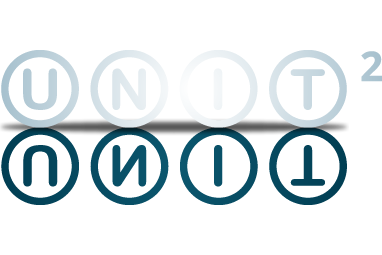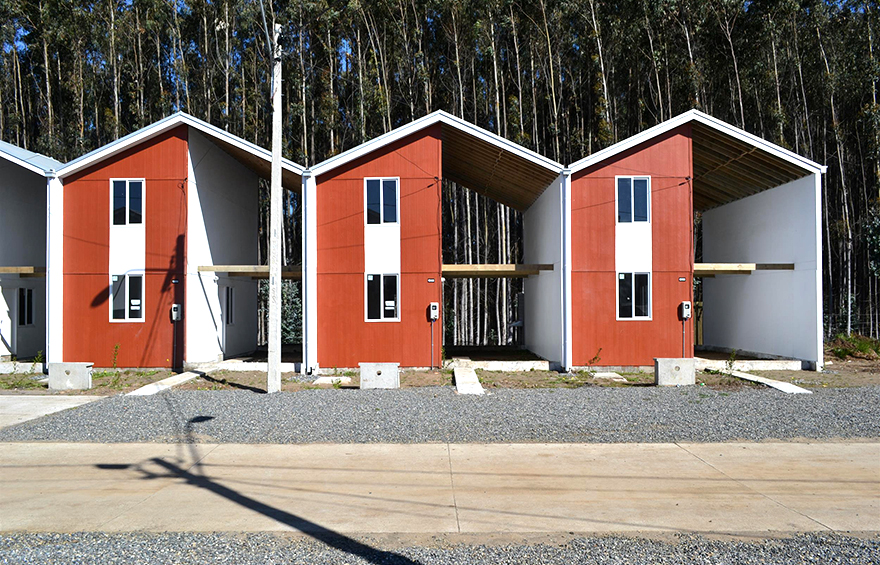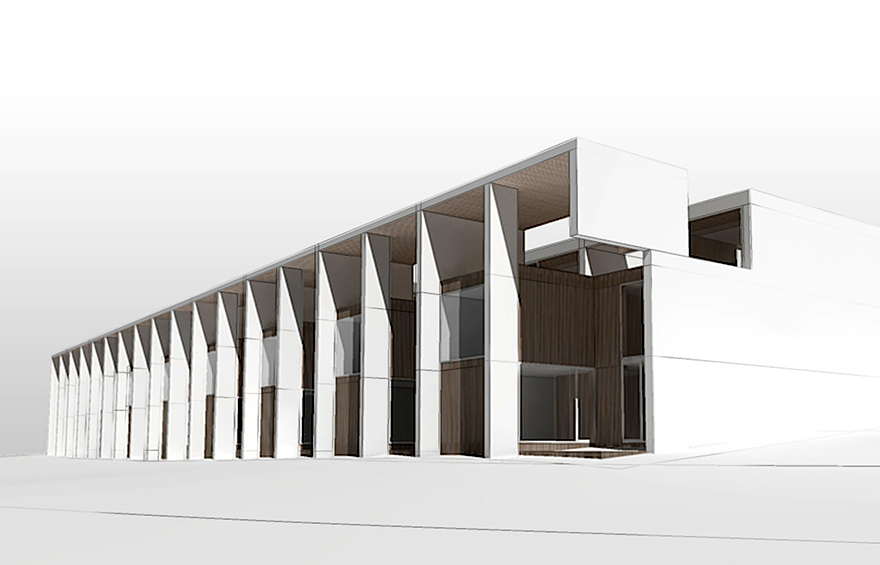Alejandro Aravena, Pritzker 2016 and some reflections from a Residential Open Building perspective
by Amira Osman
Download PDF here Arevena Prikzter and OB some reflections 012016
News of Arevena being awarded the 2016 Pritzker has been reason for some controversy amongst architectural professionals – and judging by social media in SA, there are reservations from SA architects around the award with some even mentioning other architects who were perceived to be more worthy of the award. Aravena has designed numerous noteworthy and fine projects with various programmes in various contexts – however, he is mostly known for his significant contribution towards re-thinking housing for the poor in well located city sites through a partnership (a “do-tank”) known as Elemantal.
Perhaps the most notable South African reflections on the matter came from Thorsten Deckler, who questions the “myth of creative genius” while still celebrating the fact that someone from a developing context was recognised as generally “mainstream architectural media drowns out work like this.” (Deckler, 2016). In other media, Aravena is described as “radical” probably referring to the manner in which his practice is able to engage with more socially conscious design problems through a: “.. Robin Hood structure [which] runs throughout Elemental’s work, split three ways between social housing, urban planning and more lucrative commercial contracts.” (Wainwright, 2016).
Arevena at the World Congress on Housing, Pretoria, 2005
We invited Aravena as a keynote speaker at the 2005 World Congress on Housing which we hosted at the University of Pretoria. At the time, the Quinta Monroy project (2001-2004) had started to create some ripples in the field – an architect engaging differently with urbanism and poverty, generating debate on these topics in a profession that has generally tended to distance itself from the “messiness” of informality and affordable housing in cities. Aravena presented on how a hybrid model of funding was used in the project, subsidies, savings and loans. He explained how the subsidy – which needed to include land, infrastructure and architecture – at the time allowed for 30m2 of built space – which was built with the intention of the users themselves expanding the residential unit to 72m2 after occupation.
This talk came at an opportune time when South Africa’s Breaking New Ground policy was just adopted (2004) under Lindiwe Sisulu’s leadership of the then newly re-named Department of Human Settlements. The name-change implied a re-focus from “house” to “human settlements”, Aravena’s explorations into high density urban configurations which still managed to address issues of overcrowding, circulation, light and ventilation as well as allow for future expansion by the residents managed to generate some interest from the audience.
What Aravena proposed was a set of buildings that managed to create a strong urban presence and spatial definition as well as a method by which to negotiate and manage the relationship between the individual and the collective through built form. Indeed, Elemantal focus strongly on the “urban” and perceive “architecture as an artful endeavour… meeting socio-economic challenges”… asking the question “If Chilian architecture is so good, why is social housing so bad.” (Franco, 2016).
Aravena and Elemental since 2005
Since 2005 and the Pretoria Congress, Aravena has been involved in numerous projects, many of them residential, replicating the system devised in earlier projects – delivering an estimated 2500 units, some which have increased in value (5 fold) since construction (Wainwright, 2016). All the projects have similar configurations to the earlier Quinta Monroy project and have a fixed structure delivered upfront and the option for expansion by the residents. While highly replicable, the built form has been adapted to different sites – and one can only imagine that the project process and negotiation and interaction with the various resident bodies and local authorities and clients must have been very diverse. There have been experiments with multi-storey buildings as well as higher quality single family homes.
Some of the principles underpinning the work of the practice were made more evident in the Milano Triennale of 2008, where an Elemental house was installed as 10 prefabricated panels assembled in 24 hours. It was explained that the structure/finishes ratio was inverted so that the structure absorbed almost 80% of the total cost. The focus on replication, repetition of components and chain production was also key to the design concept. (All information and images below are obtained from (“http://www.elementalchile.cl,” n.d.)
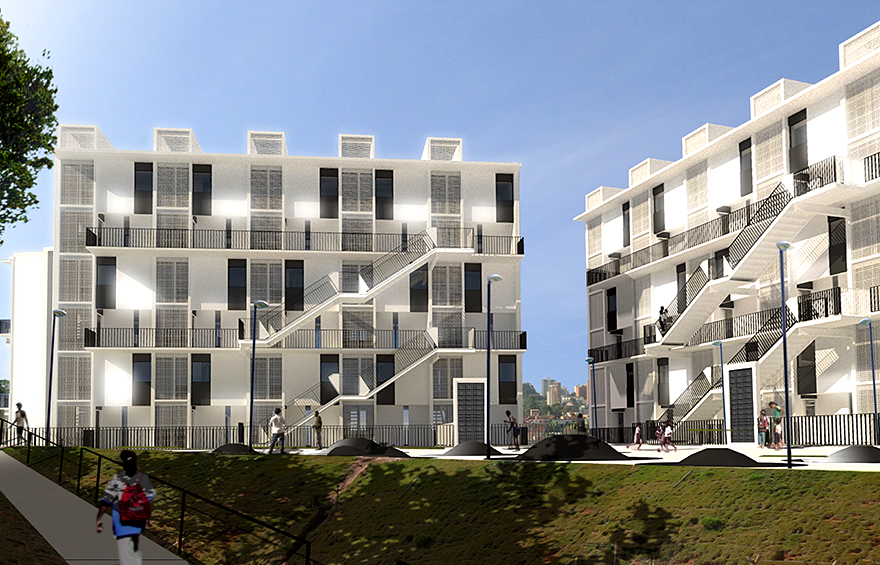
Monterrey, Mexico 2008 and Paraisopolis, Sao Paolo 2008
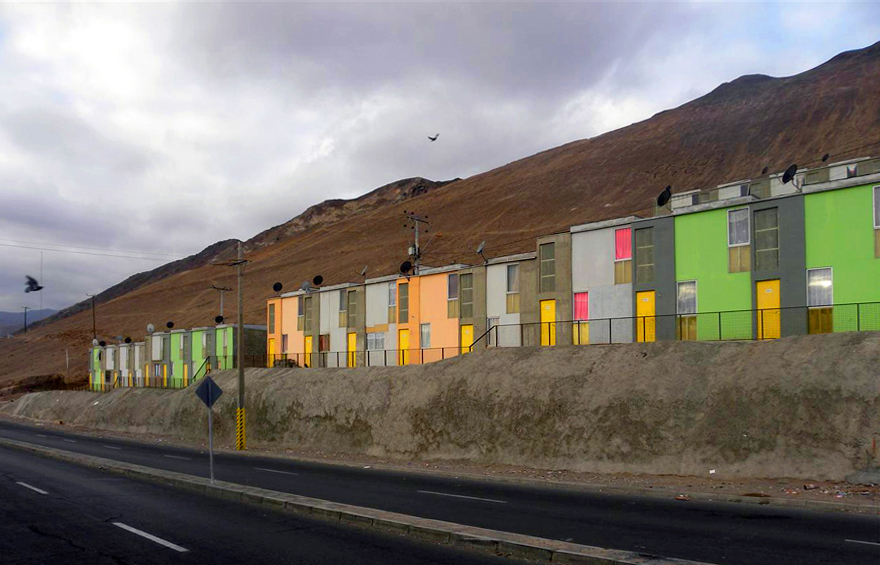
Villa Verda in Constitucion (date?) and Anto Fagasta 2008
Elemental House at Milano Triennale 2008 and En Sully, Geneva 2010
The Elemental approach to residential architecture: is it Open Building?
The basic principles of Open Building are summarised as follows: “…the way a building is “put together”, how buildings are assembled in terms of long- and short- life components and how the interface between building components allows for disassembly, replacement and upgrading with no disruptions to other building systems or components… [it] also implies the interface between building level and urban design level and between spaces within and outside of buildings and how people manage their relationships within the built environment through negotiation, transaction and deal-making.” (Osman, 2015).
So, I have been asked: could Aravena’s approach be considered an Open Building approach? The incremental/evolutionary nature of the Elemental designs allow for increased user involvement through the lifetime of the building – the options of unit growth are quite defined (probably due to the nature of the sites and the higher densities achieved) and not allowing for multiple growth paths or options as the internal layout variation would be quite limited because of the small size of the spaces and the urban settings would also pose some constraints externally.
The process delivers “part of the house” and not the complete house. Yet, these are not necessarily separated into Open Building levels with varying life spans. Aravena asks “which part should one construct?” which implies an engagement with the concept of a primary SUPPORT SYSTEM. There is an awareness that the primary structure needs to have strong urban presence and needs to be of a high quality and robust nature – refer to the Milano experiment and the greater expenditure on the structure. With the Anto Fagasa project, the Elemental website states: “The housing unit is defined by structural 3 floor high partition walls. All complex items (firewall, facilities, circulation and structure) are associated to the wall. This system generates a triple height interior void, in which families can do spatial modifications.” (“http://www.elementalchile.cl,” n.d.)
Aravena also asks “how can one set the rules of the game” which implies a positive concern with allowing maximum user control within set parameters – thus ensuring that individual actions do not infringe on the collective good. However, it is not implicitly stated that many times users are unknown and that the physical structures would have to allow for unknown clients and needs.
While some Open Building practitioners state that the architectural configuration should allow you to “be the boss behind your own front door” (acknowledgement to Karel Dekker of the Netherlands), in the Elemental case, the facades are also open to adaptation and construction by the residents.
The multiple sources of finance used for the construction are not used to deliver different components (or Open Building levels) of the project based on long and short life elements and the ownership model has not allowed for different forms of ownership (perhaps split into one agency owning the “supports” while the users own the “infill”). Rather the funding has been “put into one pot” as it were – to deliver buildings that are to a great extent “conventional” in that there is no strict system separation between the built environment levels – in Open Building terminology.
“The products of Open Building thinking usually have great “capacity”… think beyond “cosmetic, surface and facade” variation to spatial and functional variation that adds value and quality to the day-to-day experience of users. This also allows for the possibility of cost variation and rental/ownership diversity within the same development – thus avoiding solutions that perpetuate difference between people with diverse income levels…” (Osman, 2015) The Elemental residential experiments most certainly grapple with the concept of “capacity” – perhaps to the extent of “overkill” in the case of the “Make it Right” house they developed for New Orleans which has a massive porch for future expansion by the residents – but as far as is evident, they have not investigated the idea of mixed income, mixed functions or mixed typologies within the same development.
While many aspects of the projects are rooted in similar conceptual underpinnings as the Open Building approach, I believe that deeper engagement with Open Building core principles would have added much value, to an already highly valuable, experiment.
So, was Aravena’s work deserving of the recognition and what can we learn in South Africa?
I believe that the work of Elemental and Aravena is most significant. It has brought aspects neglected in mainstream architectural debates to the forefront and while many of the projects are repetitive in solution (housing is in many ways repetitive!) there is no doubt that there were diverse and unique processes behind each project solution and the repetitive structures are devised in such a way to allow for a degree of variation in the long term. I think that we in South Africa need to celebrate the Aravena award and to use it as a way to motivate for further experimentation in housing – which we are seriously lacking.
______
Deckler, T., 2016. Some “South African” thoughts on the Pritzker Prize and its winner; https://www.linkedin.com/pulse/some-south-african-thoughts-pritzker-prize-its-winner-deckler. Linkedin.
Franco, J.T., 2016. Alejandro Aravena Wins 2016 Pritzker Prize; http://www.archdaily.com/780203/alejandro-aravena-wins-2016-pritzker-prize. archdaily.
http://www.elementalchile.cl, n.d.
Osman, A., 2015. Open Building versus Architecture or Open Building as Architecture?; http://uj-unit2.co.za/open-building-versus-architecture-or-open-building-as-architecture/. UJ UNIT2 2015.
Wainwright, O., 2016. Chilean architect Alejandro Aravena wins 2016 Pritzker prize; http://www.theguardian.com/artanddesign/2016/jan/13/chilean-architect-alejandro-aravena-wins-2016-pritzker-prize?CMP=twt_a-culture_b-gdnculture. The Guardian.
